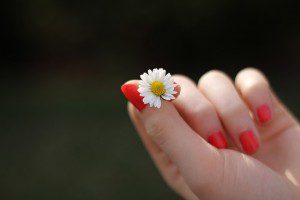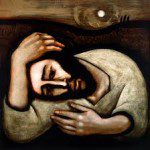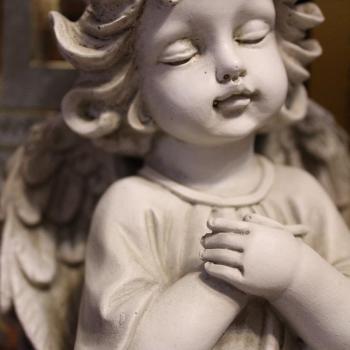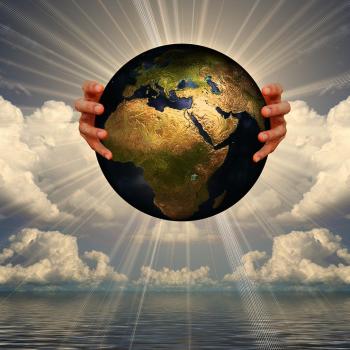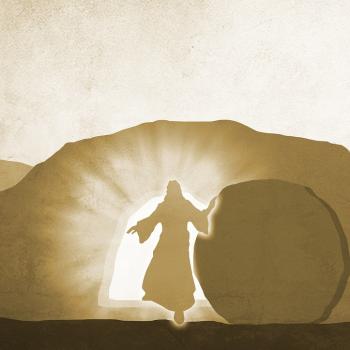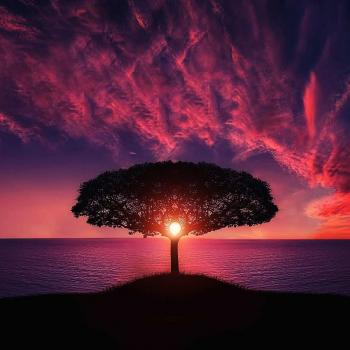We are challenged daily, if not moment by moment, by the political,
economic and social landscape that is creating the United States of America
in 2016. What will it take to keep our hearts open to others, to embrace and
even to celebrate our differences? If learning to love is so important, why is
it sometimes so hard to do?
I have been thinking about love most of my life – when I first came to understand the concept of love and when I first found myself at odds with the actual “living of love.”
The first of my many lessons on this subject came early in my life. We sat in
alphabetical order in the second grade classroom of my new school. When
the reading and phonics papers came to me, I saw that I needed crayons. I
looked to my left, my right, in front and behind me. No one would share
their crayons with me. A girl four seats away recognized my dilemma and
offered to share with me, pulling her desk close to mine. Her name was
Laura and she was my best friend for the next ten years.
As luck would have it, around this time, we had our first religion class on the
idea of love.
“You don’t have to like everyone, you just have to love them.”
I was mystified. Was this a ploy by the nuns to put a kinder face
on the unkindness of young girls, as they experimented with their
awakening personal power? What could that even mean? “You don’t have to
like everyone, you just have to love them.”
How could anyone do that? It wasn’t a question of willingness. Honestly, I
wasn’t convinced it was possible.
By then I could give a name to the “flow” of security, encouragement,
validation and appreciation I felt among my family and friends. It was
“love.” And for all intents and purposes, I was going to be up the “proverbial
creek” in conjuring up that feeling for Jennifer, Danielle, Margot or Elise.
This is a true story and the names have been changed to protect the not-so-
innocent.
For the next many years, my progress toward loving people I didn’t also
like took the form of not doing them psychological harm and
generally keeping my distance from them. It was the best I could do. This
brought me no closer to “loving” them, as I understood “loving” to actually
mean.
Loving our friends
It’s easy (most of the time) to love the people who love us, support us, and
enjoy being with us. What a true blessing it is to find people with whom we
share a certain “natural” affinity, in whom we recognize ourselves, and with
whom we share a mutually understood approach to life.
Love flows and grows in the interchange, because together we have dug a
deep “affinity well” from which we draw refreshment. The mere existence in
the world of those we love brings smiles to our faces, as we think of all that
we have shared.
If we’re lucky, we have stored away innumerable loving experiences –
moments of grace, warmth, tenderness, vulnerability, gentleness,
encouragement, counsel and truth – all reflecting the meeting and blending
of souls. We are not alone. And, even in life’s most difficult moments, we
find some semblance of peace, because we share those moments and
because we are together.
Loving our differences
To be sure, the people we love are not carbon copies of ourselves, and can
often be very, very different from us. But we absorb their differences,
embrace them, find them intriguing, even amusing or comforting. Their
differences become part of the “lovable package” of whom we perceive and
experience our loved ones to be.
But, when do the scales tip away from an acceptable amount of difference to
an unacceptable amount of difference? Is it also possible that sometimes the
conflict we perceive as difference is in reality a flaw within ourselves being
reflected back to us? When does that expandable and flexible tether between
souls simply snap? Ouch!
A friend of mine described her experience to me this way. “I like my
roads straight,” she said. “I have a job that demands that I quickly assess
situations and make informed decisions. I am a person who “dots all the i’s”
and “crosses all the t’s. And, when I see this individual coming, all I can
think of is a giant S-curve. I don’t know how he or she even gets by in the
world.”
The S-curves (or the straight roads) of our lives see the world differently
than we do, and that’s a good thing. That’s the idea. There is a reason why
they have entered our lives. We have a lot to learn from them, if we can
overcome our tendency to “throw the baby out with the bath water,”
dismissing everything about the person because of some perceived
insurmountable difference, thereby losing the possibility for learning and
absorbing whatever else that person might have to offer us.
In this situation, we are being given an opportunity to expand our world
view and we can take or reject that opportunity. But opportunities will
continue to arrive on our doorsteps. The question becomes when will we
answer the door? When will we crack open our hearts to those different from
ourselves?
Loving our “enemies”
When do people different from us become “enemies?” What makes an
enemy a threat? We humans are normally and naturally curious about others
and about our world. But, we shut down when our fears are activated.
Our fear begins with a belief that scarcity is the ruling principle of our
universe – a belief that there are not enough natural resources, or territory,
or money or power, or, worst of all, love to go around. Jealousy is the first
sign of this in relationships and greed in the national and international arena.
Loving those who don’t love us is a challenge. Not to mention, loving those
who seem to relish doing us intentional harm. Loving those
who reject our loving overtures is an even bigger challenge.
Acknowledging that unresolved, difficult relationships bind both parties
tightly into a “prison of unforgiveness,” what would need to change in
me to allow me to be open to a relationship (fully informed
by my experience) with someone I perceive to have purposefully hurt me?
I want to be clear here. I don’t mean to diminish our perceptions. Hurt is hurt
and is experienced as such. Hurt is real –our stories are real,
because we experience them as such. Sometimes we
require a re-write to our story, sometimes just an edit to our story, sometimes
an acknowledgement that as the saying goes, “It is what it is.” But, at best,
there is a feeling of “benign” emptiness that accompanies a lack of
resolution, and, at worst, a kind of depression, an uneasiness, even a fear
that we will not be able to make “sense” of the experience and thereby will
subject ourselves to its inevitable re-occurrence.
Choosing to learn to love is intentionally walking one step
at a time into the deep end of the pool – the place where our feet no longer
touch the pool floor, where keeping our heads above water becomes a
necessary occupation and where our “survival” – that is, a continuation of
life as we know how to live it – is not a given outcome.
Jesus challenges us to “love our enemies” and then immediately turns our
understanding of “enemies” on its head. “He causes his sun to rise on the
evil and the good, and sends rain on the righteous and the unrighteous.”
(Matthew 5:45) This scripture passage seems to suggest that there is
something beyond our perception of good and evil.
What if there are no “enemies” only potential “teachers?” We certainly
learn most about ourselves when we encounter difficult relationships. While
we are thinking we “know everything” about that other person, the truth is
that the only person we can ever truly know and possibly “change” is
ourselves. We are unlikely to ever know their whole story. Welcome to the
deep end of the pool!
Living of Love
Loving is an art. Artists paint it. Poets celebrate it. Musicians
give love sound. Dancers give love shape. Mystics live in love, they inhale
it and exhale it.
Love is like a tractor beam – a “good” tractor beam – drawing
us in. Drawing us into love at every level – from self-love to cosmic love –
and everything in between. And like a tractor beam, love is irresistible.
Love won’t be denied. You can choose love now, or you can choose love
later. To deny love is to deny ourselves. We are, at our best,
beings of love, like God. Love is the manifestation of God within each of us.
That’s why we feel so empty when love is denied, and so full when love is
embraced.
Why would we ever want to deny love? Because of stories told to us by an
alternate state of consciousness created and maintained by the ego. Our
perceived personal egoic interests, our tribal egoic interests, our national
egoic interests, the egoic interests of our species are all focused on
individual needs, tribal, national and species specific needs. And they get in
the way. Fear and love cannot co-exist in the human heart.
Loving draws us back to ourselves – to God. Love is our natural state. If
we ever doubt this, we need only think about the emotional pain
we experience when we shut love out or we are shut out from it.
It takes energy to deny love. It takes more energy to deny love than to
sustain our fears. It takes less energy to love than it does to fear. In loving
we have joined the natural flow of all creation. We are no longer
attempting to “swim upstream.”
“To love or not to love?” then becomes the single, most important
question.
What if my guiding principle were love? How does my life look then?
What if my loving you has nothing to do with how you show up? What if,
instead of focusing on what I give in a relationship and consequently what I
expect to get from that relationship, I focus on simply being in and working
with relationship. If I no longer need anything from you, because my ego is
no longer telling me how things “should” or “shouldn’t be,” I can simply be
“for you” or “with you,” in whatever form that takes, a being as connected
to me as my right hand is to my left. Love flows then into the heart of all
humanity and all life, finding its way to every interconnected being.
What state of heart would it require, to be able to say, not just “I love,” but
“I am love?” Contrary to what I always thought, maybe “love” is neither a
verb nor a noun, but rather a mathematical equation.
I am Love.
Love am I.
I=Love
Love=I
And with that, the living of love just got much less complicated.

